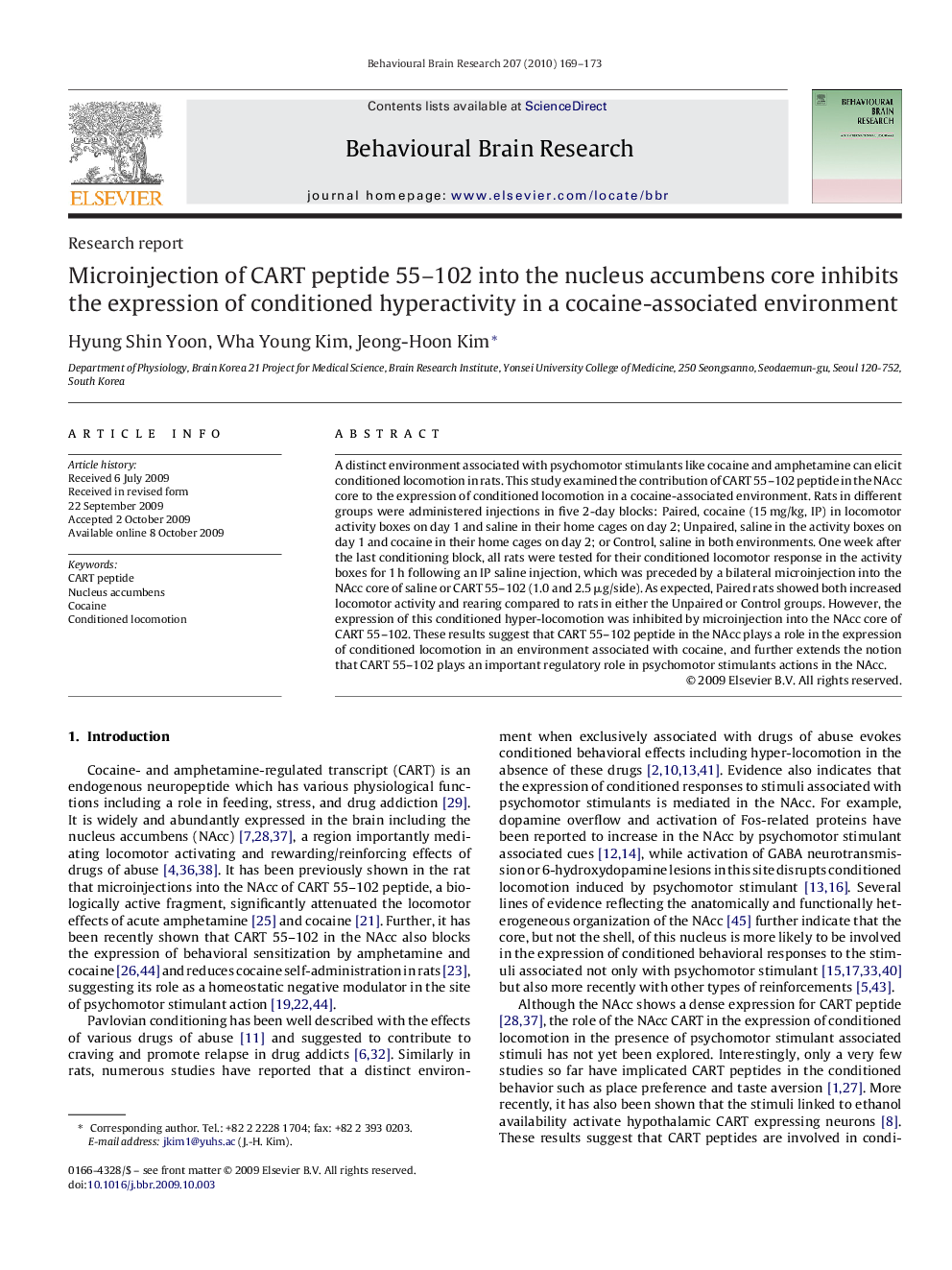| کد مقاله | کد نشریه | سال انتشار | مقاله انگلیسی | نسخه تمام متن |
|---|---|---|---|---|
| 4314339 | 1290033 | 2010 | 5 صفحه PDF | دانلود رایگان |

A distinct environment associated with psychomotor stimulants like cocaine and amphetamine can elicit conditioned locomotion in rats. This study examined the contribution of CART 55–102 peptide in the NAcc core to the expression of conditioned locomotion in a cocaine-associated environment. Rats in different groups were administered injections in five 2-day blocks: Paired, cocaine (15 mg/kg, IP) in locomotor activity boxes on day 1 and saline in their home cages on day 2; Unpaired, saline in the activity boxes on day 1 and cocaine in their home cages on day 2; or Control, saline in both environments. One week after the last conditioning block, all rats were tested for their conditioned locomotor response in the activity boxes for 1 h following an IP saline injection, which was preceded by a bilateral microinjection into the NAcc core of saline or CART 55–102 (1.0 and 2.5 μg/side). As expected, Paired rats showed both increased locomotor activity and rearing compared to rats in either the Unpaired or Control groups. However, the expression of this conditioned hyper-locomotion was inhibited by microinjection into the NAcc core of CART 55–102. These results suggest that CART 55–102 peptide in the NAcc plays a role in the expression of conditioned locomotion in an environment associated with cocaine, and further extends the notion that CART 55–102 plays an important regulatory role in psychomotor stimulants actions in the NAcc.
Journal: Behavioural Brain Research - Volume 207, Issue 1, 11 February 2010, Pages 169–173